-
 Bitcoin
Bitcoin $119800
1.38% -
 Ethereum
Ethereum $3873
3.25% -
 XRP
XRP $3.247
1.85% -
 Tether USDt
Tether USDt $1.001
0.02% -
 BNB
BNB $840.4
5.94% -
 Solana
Solana $190.0
2.55% -
 USDC
USDC $1.000
0.03% -
 Dogecoin
Dogecoin $0.2433
2.69% -
 TRON
TRON $0.3197
-0.05% -
 Cardano
Cardano $0.8367
1.39% -
 Sui
Sui $4.327
3.11% -
 Hyperliquid
Hyperliquid $44.00
0.31% -
 Stellar
Stellar $0.4461
1.76% -
 Chainlink
Chainlink $19.25
4.61% -
 Hedera
Hedera $0.2941
3.90% -
 Bitcoin Cash
Bitcoin Cash $598.4
6.89% -
 Avalanche
Avalanche $26.19
4.67% -
 Litecoin
Litecoin $115.1
0.50% -
 Shiba Inu
Shiba Inu $0.00001427
1.55% -
 Toncoin
Toncoin $3.379
2.01% -
 UNUS SED LEO
UNUS SED LEO $8.966
-0.16% -
 Ethena USDe
Ethena USDe $1.001
0.02% -
 Uniswap
Uniswap $11.04
4.16% -
 Polkadot
Polkadot $4.239
2.00% -
 Monero
Monero $324.6
0.36% -
 Bitget Token
Bitget Token $4.672
2.46% -
 Pepe
Pepe $0.00001294
2.69% -
 Dai
Dai $0.0000
0.01% -
 Cronos
Cronos $0.1443
2.71% -
 Aave
Aave $302.9
1.98%
What are the circulation and trading channels of USDT?
USDT, a dollar-pegged stablecoin issued by Tether Limited, circulates globally via exchanges, wallets, and P2P platforms, facing ongoing regulatory scrutiny regarding its reserves and transparency.
Feb 28, 2025 at 09:01 am
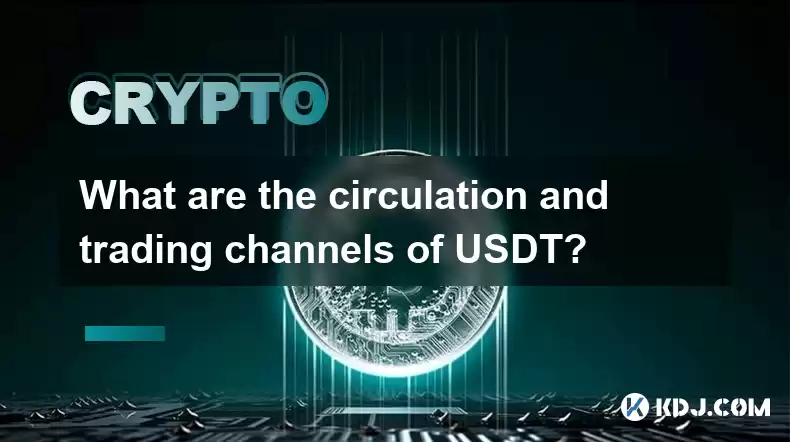
What are the Circulation and Trading Channels of USDT?
Key Points:
- Issuance and Circulation: USDT, a stablecoin pegged to the US dollar, is primarily issued by Tether Limited. Its circulation involves complex interactions between exchanges, wallets, and various financial institutions. Understanding these mechanisms is crucial for comprehending USDT's role in the cryptocurrency ecosystem.
- Trading Channels: USDT's widespread adoption means it's traded on virtually every major cryptocurrency exchange globally. However, the nuances of its trading – including on-chain and off-chain movements, as well as its role in facilitating trading pairs – significantly impact its market dynamics.
- Regulatory Scrutiny: The regulatory landscape surrounding USDT is constantly evolving, impacting its circulation and trading channels. Understanding the ongoing legal and compliance challenges is essential for assessing the risks associated with using USDT.
- Underlying Assets and Reserves: The composition of Tether's reserves backing USDT remains a subject of debate and scrutiny. This directly influences trust and confidence in the stability of the token and its circulation patterns.
- Issuance and Circulation of USDT:
The issuance of USDT is a complex process managed by Tether Limited. Unlike many cryptocurrencies with decentralized issuance mechanisms, Tether's process is centralized. When someone wants to mint USDT, they typically deposit an equivalent amount of USD (or another fiat currency) into Tether's reserves. Tether then issues an equivalent number of USDT tokens, which are then distributed to the user's digital wallet. This process is audited, although the nature and frequency of these audits have been subjects of considerable debate and controversy within the crypto community. The transparency of these audits has been a major point of contention, impacting trust and the overall perception of the stability and reliability of USDT.
The circulation of USDT is equally multifaceted. Once issued, USDT moves across various channels within the cryptocurrency ecosystem. This includes major cryptocurrency exchanges, where it's used as a primary trading pair alongside countless other cryptocurrencies. Many traders utilize USDT as a stable, low-risk asset to manage portfolio risk during market volatility. The movement of USDT between exchanges, often involving millions of dollars in daily transactions, plays a critical role in price discovery and liquidity across various crypto markets. Furthermore, USDT is also utilized for peer-to-peer (P2P) transactions, facilitated by platforms that allow users to buy and sell USDT directly from each other. This aspect of USDT's circulation allows for transactions outside the traditional exchange framework, enabling more localized and decentralized trading. The movement of USDT through these channels is tracked on the blockchain, providing a degree of transparency regarding its flow, although analyzing this data requires significant technical expertise. The intricate network of exchanges, wallets, and P2P platforms through which USDT circulates highlights the complexities of tracking its overall movement and the challenges in fully understanding its impact on the broader cryptocurrency landscape. Finally, the use of USDT in various decentralized finance (DeFi) applications further complicates the analysis of its circulation. These applications often utilize USDT as collateral for loans or as a means of generating yield, introducing yet another layer to the already intricate process of tracing its movement and usage within the crypto economy. The decentralized nature of these DeFi platforms adds to the difficulty of tracking USDT's precise circulation.
- Trading Channels of USDT:
USDT's popularity as a stablecoin makes it a prominent trading pair on virtually every major cryptocurrency exchange. Its widespread use facilitates trading of other cryptocurrencies. For instance, a trader might buy Bitcoin (BTC) using USDT instead of fiat currency. This process is far more efficient than traditional methods due to the speed and ease of cryptocurrency transactions. The prevalence of USDT as a trading pair underscores its significance in the overall crypto market structure. It's not merely a store of value; it's a crucial component of the mechanism through which other cryptocurrencies are bought and sold.
Beyond centralized exchanges, USDT is also traded on decentralized exchanges (DEXs). DEXs operate differently than centralized exchanges; they rely on smart contracts rather than a central authority to facilitate trades. This introduces a layer of decentralization and security, albeit with potentially lower liquidity compared to centralized exchanges. The trading of USDT on DEXs represents a shift toward a more decentralized financial system, further highlighting its adaptability and versatility within the evolving crypto landscape.
The use of USDT in over-the-counter (OTC) trading also deserves attention. OTC trading involves direct transactions between two parties, bypassing traditional exchanges. This approach is often favored by high-net-worth individuals or institutional investors who require larger trade volumes or seek more privacy. The OTC market for USDT provides an alternative channel for its circulation, showcasing its relevance beyond public exchanges. The relative anonymity associated with OTC trading can, however, raise concerns regarding transparency and regulatory oversight.
Furthermore, the integration of USDT into various payment gateways and services is another significant trading channel. Several businesses now accept USDT as a form of payment, bridging the gap between cryptocurrency and traditional commerce. This growing acceptance expands USDT's reach beyond the purely speculative realm of cryptocurrency trading, transforming it into a viable alternative payment method in certain contexts. This integration, however, raises regulatory questions concerning compliance with anti-money laundering (AML) and know-your-customer (KYC) regulations.
- Regulatory Scrutiny of USDT:
The regulatory landscape surrounding USDT is constantly evolving and presents significant challenges. Governments worldwide are grappling with the implications of stablecoins, and USDT, being one of the most prominent, faces heightened scrutiny. Concerns revolve around its underlying reserves, the transparency of its operations, and the potential for misuse in illicit activities. Regulatory bodies are exploring various approaches to manage the risks associated with USDT and other stablecoins, ranging from stricter reporting requirements to outright bans.
The lack of consistent global regulation creates uncertainty for users and businesses. Different jurisdictions have different regulatory frameworks, leading to confusion and potentially hindering the widespread adoption of USDT in certain regions. The absence of a unified global regulatory approach poses significant challenges for Tether Limited and necessitates a flexible approach to navigating the evolving regulatory landscape. The ongoing regulatory scrutiny significantly impacts USDT's circulation and trading channels, forcing Tether to adapt its operations to meet evolving compliance requirements.
The potential for USDT to be used in money laundering or other illegal activities is another key area of regulatory concern. The anonymity offered by certain cryptocurrency transactions can be exploited for illicit purposes. Regulatory bodies are working to address this issue by implementing stricter KYC and AML regulations, increasing the burden on exchanges and service providers handling USDT. These regulatory efforts aim to prevent the use of USDT for criminal activities, thereby enhancing the overall integrity and security of the cryptocurrency ecosystem. However, the effectiveness of these measures depends on international cooperation and the ability of regulatory bodies to keep pace with the rapid evolution of the cryptocurrency landscape.
- Underlying Assets and Reserves of USDT:
The composition of Tether's reserves backing USDT is a critical aspect of its stability and overall trustworthiness. The company claims that each USDT is backed by a corresponding amount of USD and other assets. However, the details of these reserves and the transparency surrounding their composition have been subject to considerable debate and scrutiny. Concerns have been raised regarding the lack of complete transparency and the potential for discrepancies between the amount of USDT in circulation and the value of the underlying assets.
The lack of consistent and independently audited disclosures regarding the composition of Tether's reserves has eroded trust among some users and investors. Regular audits by reputable accounting firms are essential to verify the claims made by Tether regarding its reserves and to build confidence in the stability of USDT. The absence of consistent and reliable auditing practices has fuelled skepticism and created uncertainty in the market, affecting the perception of USDT's overall value proposition.
The nature of the assets backing USDT is also crucial. If a significant portion of the reserves is invested in risky assets, this could pose a substantial threat to the stability of the token. The diversification of Tether's reserves is a vital consideration in assessing the overall risk associated with USDT. A lack of diversification could amplify the impact of any negative events affecting the underlying assets, potentially leading to a loss of value and eroding investor confidence. The ongoing debate and scrutiny surrounding the composition of Tether's reserves highlight the importance of transparency and rigorous auditing in maintaining trust and stability in the stablecoin market.
FAQs:
Q: Is USDT truly backed 1:1 by the US dollar?
A: Tether claims a 1:1 backing, but the exact composition of their reserves and the level of transparency surrounding them remain a subject of ongoing debate and scrutiny within the cryptocurrency community. Independent audits have been inconsistent, fueling uncertainty.
Q: What are the risks associated with using USDT?
A: Risks include the potential for de-pegging from the US dollar due to issues with reserve management or regulatory actions, counterparty risk associated with Tether Limited, and the possibility of its use in illicit activities. Regulatory uncertainty also presents a significant risk.
Q: How can I buy USDT?
A: USDT can be purchased on most major cryptocurrency exchanges. You'll typically need to fund your exchange account with fiat currency (like USD) and then trade it for USDT. Some P2P platforms also facilitate USDT purchases.
Q: Is USDT regulated?
A: The regulatory landscape for USDT is complex and varies significantly by jurisdiction. While some regulatory bodies are actively investigating and considering regulations for stablecoins, a consistent global regulatory framework remains elusive.
Q: What are the advantages of using USDT?
A: USDT offers relative stability compared to other cryptocurrencies, facilitating easier trading and reducing volatility risk. It acts as a bridge between fiat currency and the crypto market, making crypto transactions more accessible. Its wide acceptance on exchanges increases liquidity.
Q: What are the alternatives to USDT?
A: Other stablecoins exist, such as USDC, DAI, and BUSD, each with its own characteristics, backing mechanisms, and regulatory status. These alternatives offer varying degrees of transparency and stability. Choosing an alternative depends on individual risk tolerance and preferences.
Q: How is USDT's circulation tracked?
A: USDT's movement is partially traceable on the blockchain, although this only shows on-chain transactions. Off-chain transactions and movements within exchanges are more opaque. Analyzing on-chain data requires specialized tools and technical expertise.
Q: Can USDT be used for everyday transactions?
A: While some businesses accept USDT as payment, its widespread adoption for everyday transactions is still limited. Its use is primarily concentrated within the cryptocurrency ecosystem. The regulatory landscape and acceptance by merchants are still evolving.
Disclaimer:info@kdj.com
The information provided is not trading advice. kdj.com does not assume any responsibility for any investments made based on the information provided in this article. Cryptocurrencies are highly volatile and it is highly recommended that you invest with caution after thorough research!
If you believe that the content used on this website infringes your copyright, please contact us immediately (info@kdj.com) and we will delete it promptly.
- Tether Gold's Meteoric Rise: Market Cap and Soaring Gold Demand
- 2025-07-28 10:30:11
- Reddit, Crypto, and Altcoins: Navigating the Hype in 2025
- 2025-07-28 10:30:11
- Bitcoin, Altcoin, Volume Surge: Decoding the Crypto Market's Latest Moves
- 2025-07-28 10:50:20
- Bitcoin, Altcoins, and 2024 Targets: A NYC Perspective
- 2025-07-28 10:50:21
- Moo Deng Meme-Coin Mania: ROI or Just Hype?
- 2025-07-28 10:55:13
- Ethereum, Injective, and Tokenized Stock: A New Era in DeFi?
- 2025-07-28 11:10:12
Related knowledge

How to choose a reliable USDT exchange service provider? How to identify?
Jun 12,2025 at 03:15pm
Understanding the Role of USDT in Cryptocurrency TradingUSDT (Tether) is one of the most widely used stablecoins in the cryptocurrency market. It is d...
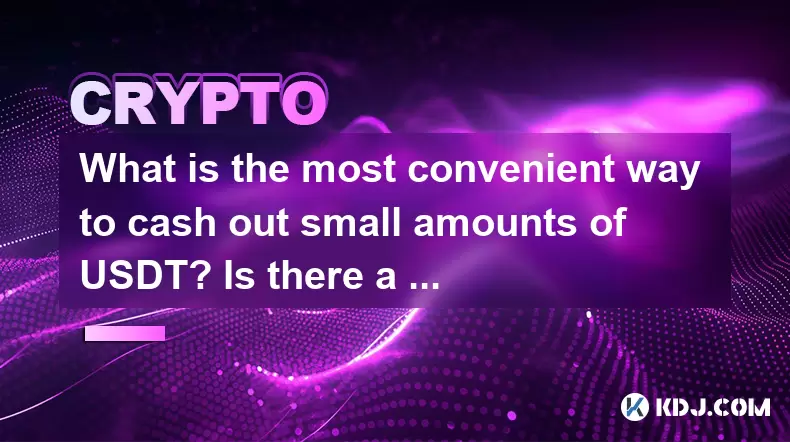
What is the most convenient way to cash out small amounts of USDT? Is there a shortcut?
Jun 11,2025 at 11:00pm
Understanding the Need to Cash Out Small USDT AmountsCashing out small amounts of USDT can be a challenge for many crypto users. Traditional methods o...

How to transfer USDT to PayPal or international payment tools?
Jun 15,2025 at 05:28am
Understanding the Basics of USDT and PayPal IntegrationUSDT (Tether) is a stablecoin pegged to the US dollar, offering blockchain-based value transfer...
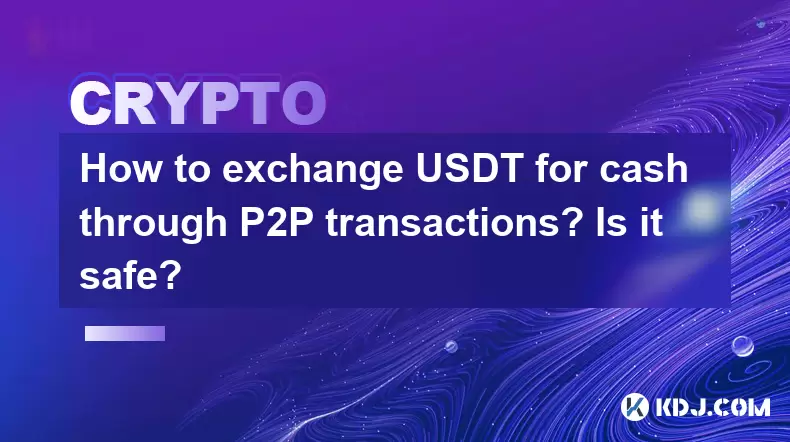
How to exchange USDT for cash through P2P transactions? Is it safe?
Jun 18,2025 at 07:56am
Understanding USDT and P2P TransactionsTether (USDT) is a stablecoin pegged to the value of the US dollar, making it a popular choice for users who wa...
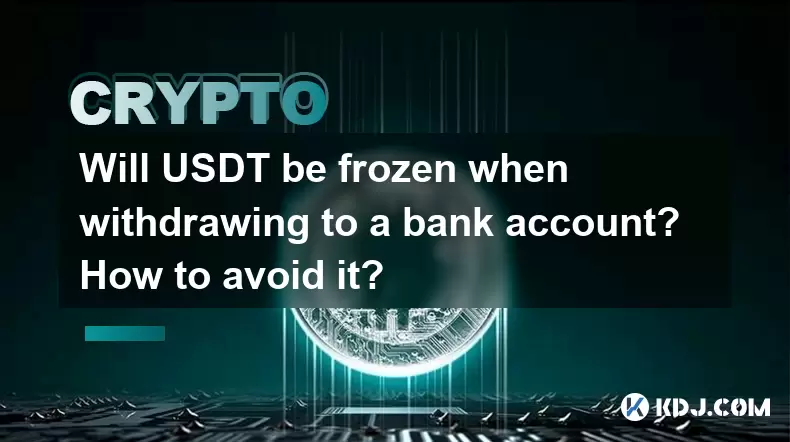
Will USDT be frozen when withdrawing to a bank account? How to avoid it?
Jun 15,2025 at 10:03am
Understanding USDT Withdrawals and Bank Account Freezing RisksWhen users decide to withdraw USDT (Tether) to a bank account, one of the most common co...
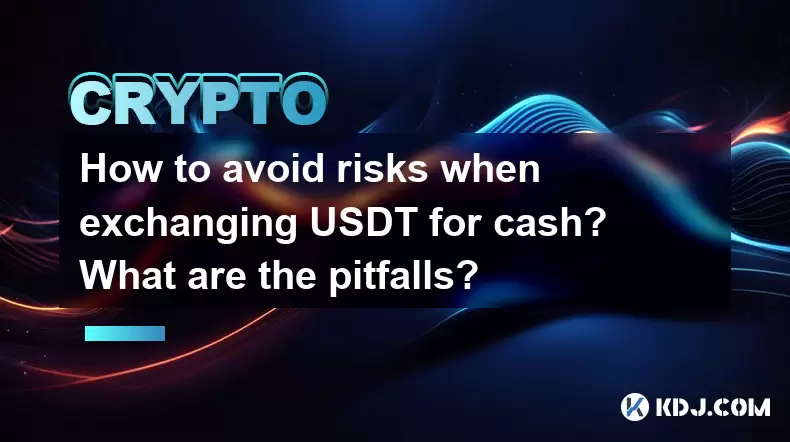
How to avoid risks when exchanging USDT for cash? What are the pitfalls?
Jun 11,2025 at 08:14pm
Understanding the Risks of Exchanging USDT for CashWhen exchanging USDT (Tether) for cash, users must be aware of the potential risks involved. As a s...

How to choose a reliable USDT exchange service provider? How to identify?
Jun 12,2025 at 03:15pm
Understanding the Role of USDT in Cryptocurrency TradingUSDT (Tether) is one of the most widely used stablecoins in the cryptocurrency market. It is d...

What is the most convenient way to cash out small amounts of USDT? Is there a shortcut?
Jun 11,2025 at 11:00pm
Understanding the Need to Cash Out Small USDT AmountsCashing out small amounts of USDT can be a challenge for many crypto users. Traditional methods o...

How to transfer USDT to PayPal or international payment tools?
Jun 15,2025 at 05:28am
Understanding the Basics of USDT and PayPal IntegrationUSDT (Tether) is a stablecoin pegged to the US dollar, offering blockchain-based value transfer...

How to exchange USDT for cash through P2P transactions? Is it safe?
Jun 18,2025 at 07:56am
Understanding USDT and P2P TransactionsTether (USDT) is a stablecoin pegged to the value of the US dollar, making it a popular choice for users who wa...

Will USDT be frozen when withdrawing to a bank account? How to avoid it?
Jun 15,2025 at 10:03am
Understanding USDT Withdrawals and Bank Account Freezing RisksWhen users decide to withdraw USDT (Tether) to a bank account, one of the most common co...

How to avoid risks when exchanging USDT for cash? What are the pitfalls?
Jun 11,2025 at 08:14pm
Understanding the Risks of Exchanging USDT for CashWhen exchanging USDT (Tether) for cash, users must be aware of the potential risks involved. As a s...
See all articles

























































































